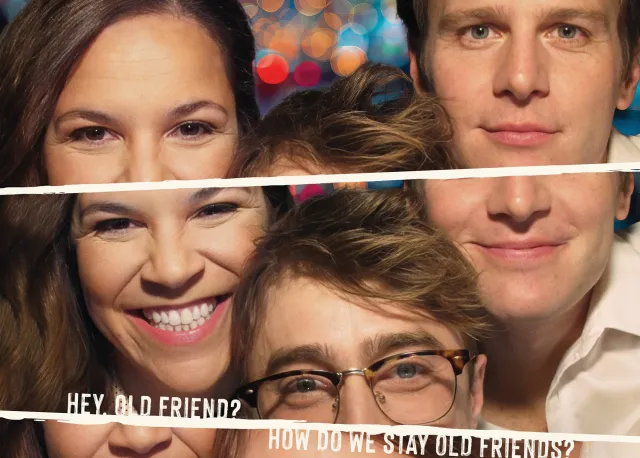Downtown Race Riot
Chloë Sevigny plays a heroin-addicted single mother in this new off-Broadway play.
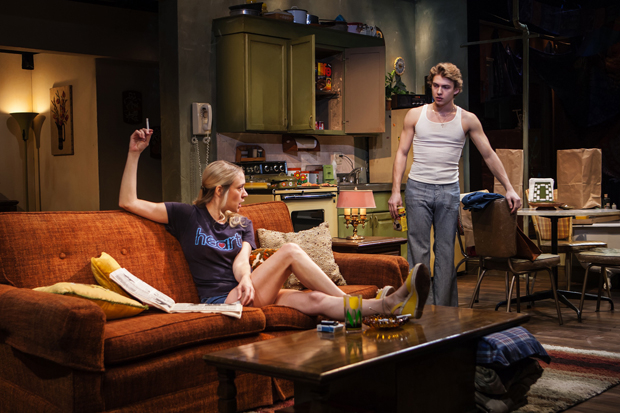
(© Monique Carboni)
Playwright Seth Zvi Rosenfeld writes in his bio for Downtown Race Riot that his plays are his attempt to recreate the sights and sounds of his childhood in the New York City of the 1970s. It's hard to argue against the authenticity of director Scott Elliott's carefully designed and furiously acted production for the New Group. Yet something about the play itself feels excessive, like a memory that has long faded to legend.
As you might have guessed, the play is about a race riot in downtown Manhattan. Jimmy "Pnut" Shannon (David Levi) lives with his heroin-addicted mother, Mary (Chloë Sevigny), and his tomboy sister, Joyce (Sadie Scott), in a section 8 apartment in Greenwich Village. He and his Haitian friend, Marcel "Massive" Baptiste (Moise Morancy), are involved with some local toughs who are planning a riot to drive black and Hispanic people out of Washington Square Park. (Outside of this play, does anyone organizing a riot actually call it a riot?) Of course, Massive is black, but the white gang leader gave him a red bandana to mark him as an exception. Pnut knows it's just a trick after hoodlums Tommy-Sick (Cristian Demeo) and Jay 114 (Daniel Sovich) tell him as much. They plan to lure Massive to the park and kill him, so Pnut tries to stop his friend from going.
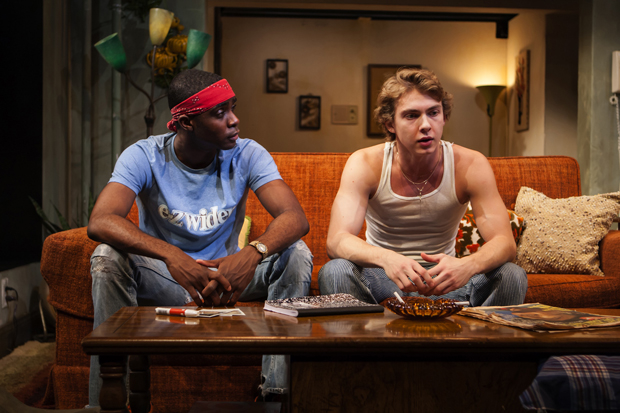
(© Monique Carboni)
The story is inspired by a real race riot that occurred in Washington Square Park on September 8, 1976, and resulted in the death of Marcus Mota, a 22-year-old Dominican student. Among the defendants in the eventual criminal trial were one black man and one Latino (both were found guilty of manslaughter and served time in prison). While Rosenfeld touches on the complex tribal loyalties that might lead a black man on a crusade to rid his neighborhood park of other black people, he has a lot more to say about the social deprivation in which his characters live. This is a play about class, rather than race.
We know that from the first minute, in which Mary mentions her disability check and her plan for a lawsuit against the city about lead paint. Later in the play, she refers to Joyce's friends as "unproductive members of society." Between her lack of self-awareness and her opioid problem, Mary becomes emblematic of the fabled "white working-class" about whom so much ink has been spilled since last November. Racial animosity merely completes the picture.
As Mary, Sevigny embodies the tension between her self-image as a hippie earth mother and her reality as a junkie. Her words are motivated by the former, while her actions are driven by the latter, resulting in a performance that veers wildly between nuanced and completely over-the-top.
That's true for the rest of the actors as well. Levi fills Pnut with adolescent rage, while Morancy is massively charming. Scott deftly walks the uncomfortable border between childlike and sexual. Demeo and Sovich are the most fresh-faced hooligans this side of West Side Story.
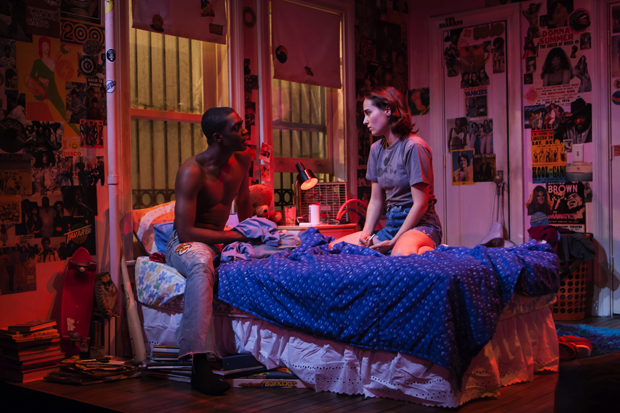
(© Monique Carboni)
In staging this perky cast, Elliot aims for gritty social realism, but too often lands in sensationalism, like the scene with Mary's lawyer, Mr. Gilman (a jittery Josh Pais). We understand that cozy Manhattan living breeds a certain level of intimacy, but the sight of mom and her attorney doing coke and making out on the couch while Pnut watches from the foyer is a bit much.
Derek McLane's set is similarly deceptive in its authenticity. He has imported an apartment into the Linney Theater, taking up the majority of the floor space and pressing the audience into just six rows. While it brings us into the Shannon home, it makes the artifice of the performances all the more apparent. McLane works magnificently with lighting designer Yael Lubetzky to cast the stage in vivid oranges and yellows that seem to bleed, making everything look like an old photograph. Clint Ramos's well-selected period costumes (fitted open shirts, high-waisted pants that flare out) also do that. M.L. Dogg sensitively underscores the play with the faint sound of the radio: It's hard not to get emotional as Elton John sings "Tiny Dancer."
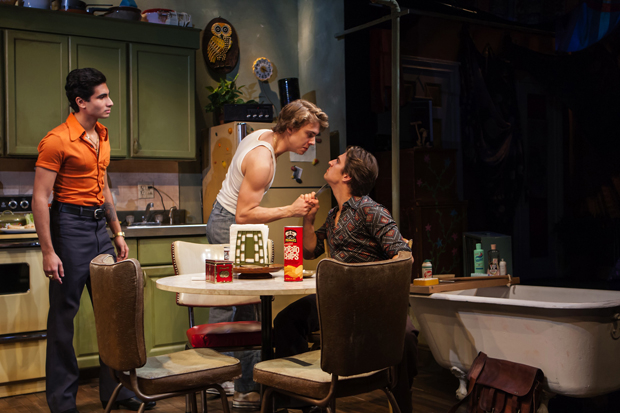
(© Monique Carboni)
The play ends with a spectacular fight sequence from UnkleDave's Fight-House that thrusts the violence of this world right under our noses and forces us to take a big whiff. It looks real and feels dangerous. While technically laudable, it only underlines the exploitative nature of this play. Class is undeniably a subject that is underexplored in the American theater, but it is difficult to glean much insight from this off-Broadway show in which welfare recipients are put in combat for our pearl-clutching amusement.








